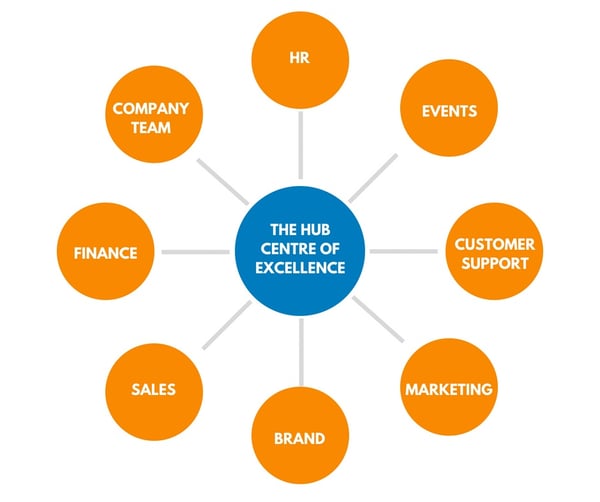
The hub and spoke business model can be an important element in adding value to your business. If you have plans to sell up in the future then the time to start planning for this is now. Hub and spoke is a business model that establishes a clear chain of command and is designed to improve decision making. It allows employees to make inquiries with the appropriate people so as to improve consistency.
Improve the value of you business with the right professional help!
The hub and spoke model found early beginnings in the transportation industry, where Delta Airlines helped revolutionise the aviation sector in 1955 with the idea that if a network of routes worked from a central hub transporting freight and passengers would be more efficient.
In the 1970s FedEx discovered the value of this simple method and adapted it to their own transportation process and, with such great success for years in one industry, other businesses outside of transportation have now starting adopting and implementing the hub and spoke model.
The purpose of the hub and spoke system is to remove you, the owner, from the business decision-making process. That might seem odd but when you decide to sell, your business will have the necessary infrastructure in place to ensure its survival and growth without your leadership - a key component purchasers look for in would be acquisitions.

In that sense separating you the owner, from the organisation is important however, the question is how to do it effectively? By following these 4 steps, owner managers can implement an efficient plan that removes them from the day-to-day running of their enterprise.

Ideally your plan will specify objective, strategies, financing, as well as sales and marketing initiatives. Having a written plan provides your management team with a guideline of what needs to be achieved and allows them to find a way to accomplish those goals.
During the initial stages of implementing the hub and spoke system it is important to involve your management team in the process so they are aware of what is happening. Furthermore, it's beneficial to have their opinions and feedback on the system, as they will be the predominant group using it.
Your managers need to feel comfortable with the model as they will introduce it to employees. Moreover, being involved in the running and implementation of the model may give them a sense of ownership and improve motivation.
Before withdrawing yourself from the day-to-day running of the business, your management team will need to acclimatise to their increased responsibilities. This means your job will be to review their work.
Be prepared for plenty of questions, and hopefully this allow for a smooth transition to the hub and spoke model.
Make sure you create written systems that record all transactions so as to provide your management with intelligence to base future decisions on. They will get a feel for what has worked in the past and what has not been successful. It will also be more efficient for writing plans and forecasts, potentially making your business more appealing to future buyers.

Remember, the hub and spoke system is not intended to make your growing business dependent on a few managers. Instead it should establish the appropriate communication channels, providing each department with clear targets, and allowing your teams to move forward without your help. Ultimately this will help make your organisation appear as a less risky investment to a potential purchaser in the future.
The content of this post is up to date and relevant as at 02/08/2019.
Please be aware that information provided by this blog is subject to regular legal and regulatory change. We recommend that you do not take any information held within our website or guides (eBooks) as a definitive guide to the law on the relevant matter being discussed. We suggest your course of action should be to seek legal or professional advice where necessary rather than relying on the content supplied by the author(s) of this blog.
Click below for office location details
leave a comment -